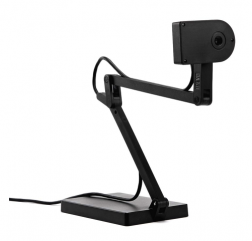Mobile and virtual learning through new pedagogy at school and at home
Petri Lounaskorpi & Lauri Pirkkalainen OEB 2013 esityksen abstrakti (pidetty 6.12.2013)
This year has been challenging for our innovative school. The building has humidity problems owing to which several students have had to stay at home. So, our challenge was organizing schooling at home.
The Konnevesi High School is a pioneer of e-learning, online teaching/learning and mobile learning in Finland. Our staff have plenty of experience of online and virtual worlds. Most of the teaching staff offer online or other types of web courses to schools around the country.
We have also trained other schools’ teaching staffs to execute courses on subjects we cannot offer.
But now, we were faced with a new problem. Since some of our students could not participate in the daily lessons, we had to organize the lessons in every subject and from every classroom in those students’ homes. That meant having the students participate in the normal lessons as a group of their own.



So, we created a simple online classroom setting, which only contained a USB document camera (Ipevo Ziggi USB Webcam Document Camera). The course content, assignments and instructions were presented as a didactic interface in a virtual platform. The platforms were created in the Peda.net learning environment and the Second Life virtual world.
The teachers taught their lessons normally in the classrooms for those students who were present. The class was simultaneously broadcast to student homes using the WebLI virtual teaching environment.
The teachers used the USB camera for multiple purposes. Thanks to a flexible stand, the camera could be turned to face different directions. When the teacher wanted to be visible to absent students, he/she just turned the camera to face herself. If he/she wanted to show a document or work done on the blackboard, the camera was turned to face the board. They also showed their blackboard notes, PowerPoint slides and any texts or practice book pages to the remote students. Vice versa, the homeschoolers were equipped with similar USB cameras and they showed their homework and other materials to the class.
The experiment turned to an everyday practice in a very short time, and the teachers quickly learned to use the equipment. Of course, using the equipment was no problem for the students.
After couple of months, the need for recording emerged. The teachers started to record their classes and add those recordings to the learning environment. These recordings were first used when a student could not participate in the actual lesson. There were, of course, some problems with connections, electricity, etc. All students also used these recordings as review material before exams. We are now building a media library containing most of the lessons in almost all subjects. The recordings have now been indexed as short clips according to topic. The teachers can now collect preliminary material from these clips for flipped classroom lessons, review material for exams, or for other purposes.
The learning results proved promising. We evaluated the students and compared their results to their learning history earlier in the spring. The entire student group received better marks after studying online. The students’ comments included: “The best part was that I could learn when it suited me best” and “You can listen to the teaching as many times as you need”.
Also, the teachers were very happy after the method had been internalized. They found that after having made their first couple of lesson plans very strictly, they started to change their planning to accommodate for this multi‑broadcasting method. They felt like television directors deciding what picture they should send home for the students.
The experiment continues and the results are being measured after every term. These good technical, pedagogical and didactical practices are presented in our national platforms.
Löytöretkillä toisessa maailmassa, vol 2Lauri Pirkkalainen & Petri Lounaskorpi (toim.),12/ 2013, 19.11.2013